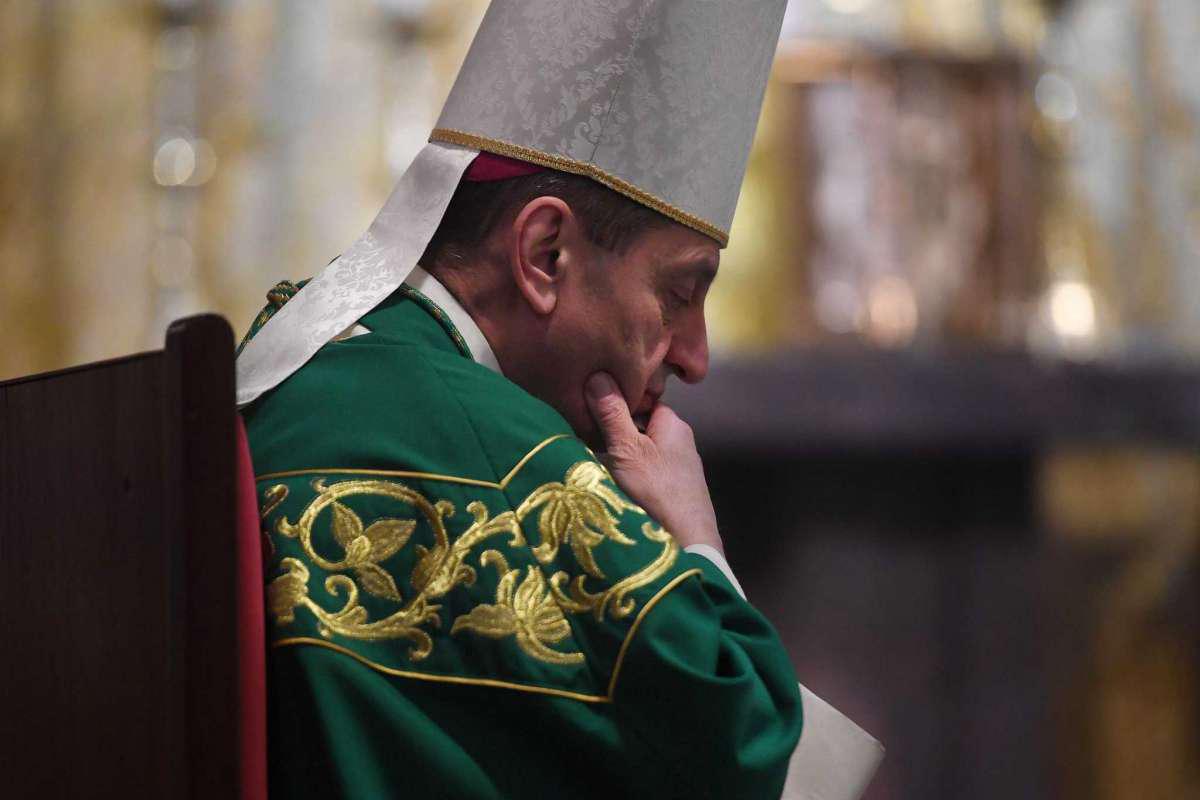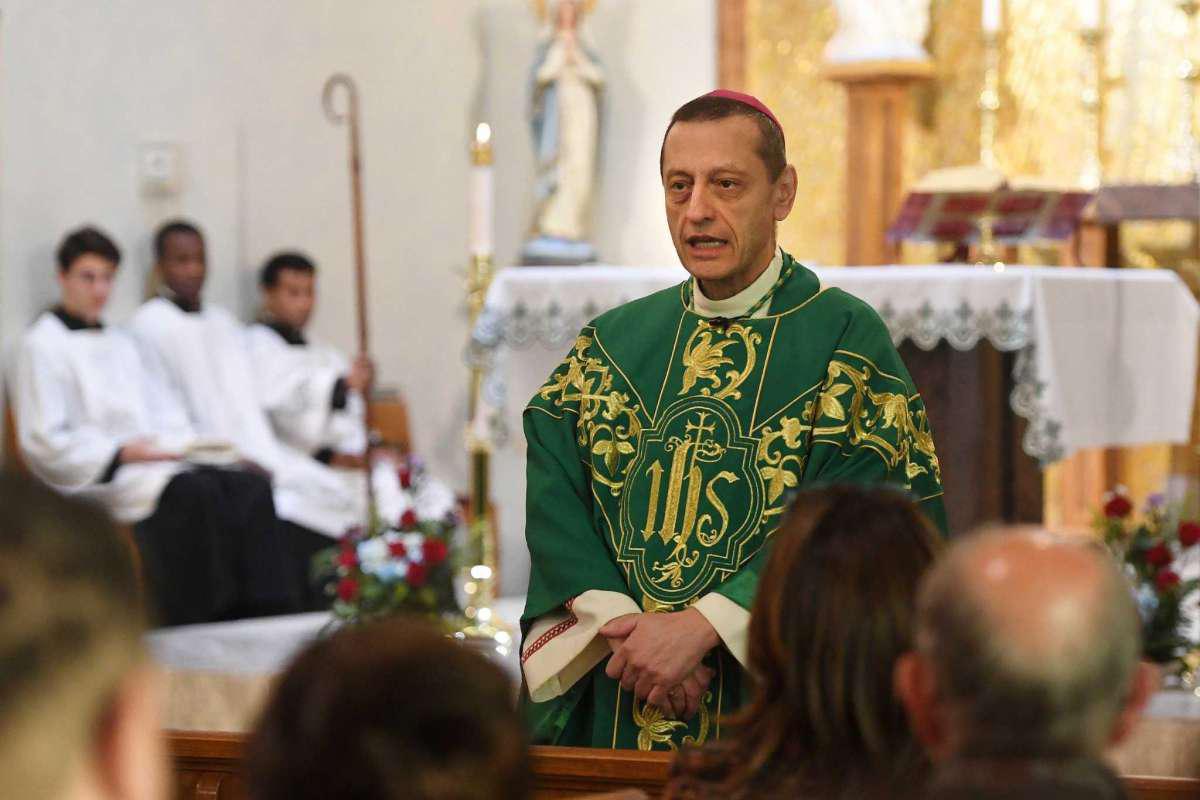|
Priest abuse survivor: ‘Our trust in our faith was blind’
By Erin Kayata
It was a sighting of the priest allegedly driving a teenage boy alone in his car that prompted a church official to report Rev. Jaime Marin-Cardona. The report led to an investigation and Marin-Cardona being placed on leave from the church while the state Department of Children and Families and the Danbury Police examine the abuse allegations. Being alone in a car with a minor violates one of the many policies in the Diocese of Bridgeport’s Safe Environment Handbook. If this policy existed in 1969, it may have helped Monroe resident Peggy Fry. Fry, now 69, grew up in Trumbull as part of a devout Catholic family with five children. The family volunteered at St. Theresa’s in Trumbull, laundering altar linens and counting collection money. Fry was also part of the Catholic Youth Organization. “Our trust in our faith was blind,” Fry said. “We believed if we did everything we could for our church, we were paving our road to heaven.” Through the CYO group, Fry met the priest who she says sexually abused her for about a year when she was 16. Fry said he treated the youths to movies and ice cream and took her home last so they can be alone in his car. On ski trips, Fry said he isolated her by insisting to the other chaperones that he needed her to make seating charts for dinnertime. He gained the trust of Fry’s family by going to dinner at their house. Today, none of this would be allowed. Previous allegations of abuse have led the church to implement “strict” policies that helped quickly flag Marin-Cardona’s alleged behavior, said Brian Wallace, spokesman for the Diocese of Bridgeport. The diocese’s Safe Environment Initiative applies to all employees, including contract workers, and volunteers in Fairfield County, and calls for awareness training sessions, background checks and a sexual misconduct policy. “It’s a difficult story, but the reality is our programs did work,” Wallace said. “We were able to detect this early, act on it immediately.” One policy requires two adults to be in the car with a minor — a rule Marin-Cardona is accused of violating, Wallace said. The policies cover everything from inappropriate touching, how to communicate with minors and restrictions on being alone with a child. All volunteers and employees for the Diocese of Bridgeport are made aware of the policies and risk factors of sexual abuse through a three-hour training called VIRTUS, Protecting God’s Children. The training and background checks are done every five years for clergy and adults who work with children. Volunteers go through the same training at least every 10 years. Mandatory reporting guidelines are also in place. VIRTUS was created by the National Catholic Risk Retention Group and 100,000 people have taken the training since 2003. The training is required for anyone wanting to be involved in Bridgeport diocesan churches. The course includes two videos, one on sexual abuse and its effects and one on the policies to prevent it. While the program was made by the church, the focus is not limited to abuse by priests. “It’s looking at trust and respected members of the community in general,” Safe Environment Program Assistant Diane Scott said. “What I try to emphasize is they’re all very sick individuals. ... Child sexual abuse has no faith. … An adult should have these same boundaries with any child. It doesn’t matter your location or occupation.” Erin Neil, director of Safe Environment and victim assistance coordinator for the Diocese of Bridgeport, said the course highlights inappropriate behavior, which might signal “grooming” or the possibility of abuse. “It is a challenge because it’s relatively new in the life of the church,” Neil said. “In the past, we’d never think twice of having someone come in the car and take them down the street for ice cream...now things have changed very much and we have to be thinking about it at every event, every overnight trip. Every event in a church now has to consider Safe Environment policies before it begins...it doesn't stop the activities we have. We just have to do them under different guidelines.” The church now also immediately reports allegations to the police instead of only notifying DCF, based on the recommendations of an October report that found the church historically failed to notify law enforcement of child abuse. This process was followed in Marin-Cardona’s case, Wallace said. After DCF initially found no wrongdoing, a police investigation uncovered “additional, more specific information” to substantiate the allegation. Marin-Cardona, 51, was first assigned in 2010 to Saint Joseph Parish in South Norwalk, where he remained until becoming the parochial vicar of Our Lady of Guadalupe in Danbury in 2014. He most recently served at Saint Mary Parish in Bridgeport. In addition to police and DCF, allegations, including those against Marin-Cardona, are sent to the church’s sexual misconduct review board, Wallace said. The board is comprised of people not employed by the diocese who review cases and make recommendations to the bishop. In October, the diocese released results of a report examining sexual abuse. Bishop Frank Caggiano hired retired state Superior Court judge Robert Holzberg to investigate abuse via unrestricted access to diocesan records and archives. Gail Howard, co-volunteer leader of Survivors Network of those Abused by Priests’ Connecticut chapter, said the church needs to go beyond training to prevent abuse by releasing those files to law enforcement for a more thorough investigation. In addition, Howard said the church also needs to stop lobbying against the removal of the statue of limitations for sexual abuse civil lawsuits. “That’s great,” Howard said of the training. “But it’s like closing the barn door after the horse escaped. Maybe that’s responsible for the apprehension of Marin-Cardosa, so I applaud that. The problem is the issue of child abuse is built into the (old boys network) of the church.” Fry said she likely would not have been abused if Safe Environment programs existed when she was a teen. Fry said a year after her abuse ended, a friend reported she’d been abused by the same priest who was then moved to another parish. Fry’s abuser stayed in the church and she encountered him as an adult when he performed her nephew’s confirmation. A major step in healing came in 2015 when Caggiano met with abuse survivors. After years of reaching out to the church with no response, Fry was hesitant to go, but did at the insistence of her husband. “I felt he was just like the rest of them,” Fry said of Caggiano. “I was wrong. He said we’ve got to get rid of this poison and we did.” Fry continues to attend Mass, volunteers with the church and speaks as a facilitator for VIRTUS classes where she shares her story. While Fry is pleased with the measures that have been taken, particularly under Caggiano, she said the church still has room for improvement. “I honestly believe if there were classes such as that when I was young, I wouldn’t be standing there telling my story,” she said. “There’s so many red lights that should have been seen. ... They still have a long way to go as a church, but they’re taking the right steps now. It’s just not fast enough.” Contact: erin.kayata@hearstmediact.com
|
.
Any original material on these pages is copyright © BishopAccountability.org 2004. Reproduce freely with attribution.

